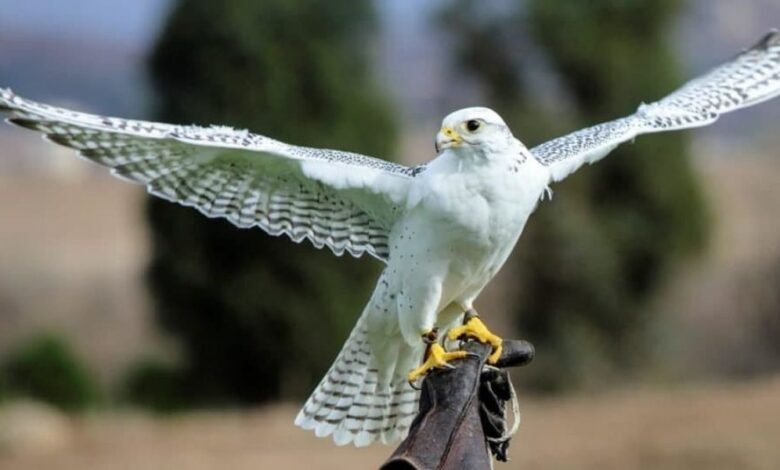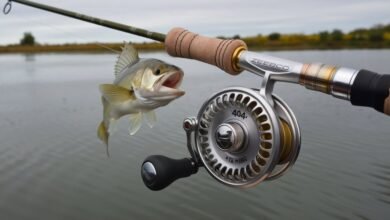Discovering the Unique Beauty of the Hancock Bird

Introduction
Rare and interesting species sometimes attract bird seekers who want to find out the Hancock bird. Not an outstanding or famous species, like some others, it is still nice to know this species, which has a great story with delicate nature balance. It goes into describing the habitat, appearance, and conservation status of the Hancock bird. Overall, it is readable and informative for any nature lover and bird watcher.
What is the Hancock Bird?
It is one of those rare species of birds that is seen in a small pocket of areas, mostly nesting in thick forests and wetlands. Known for its bright plumage and melodious songs, many scientists and bird enthusiasts have been glued to finding it. Its size lies somewhere between small and medium, with its most characteristic features being bright feathers that distinguish the bird from its peers.
Appearance and Physical Characteristics
It is known for its bright colours, which range from deep blues to vibrant yellows. It has broad wings and keeps a dexterous flight through the trees. The beak of the Hancock bird is slightly curved which is excellent for catching small insects, constituting a huge chunk of what they eat. Unlike the larger birds, it moves really fast and uses its tiny size in passing through dense foliage quite easily.
| Characteristic | Description |
|---|---|
| Size | Small to medium |
| Color | Blue, yellow, with occasional red hues |
| Beak | Slightly curved, designed for insect eating |
| Wingspan | Broad for agile movement |
| Habitat | Forests, wetlands |
Habitat and Distribution
It mainly inhabits regions with both trees and water sources. Its living grounds are in forests, wetlands, and sometimes the boundaries of human areas where nature meets civilization. Being different settings makes the Hancock bird a robust species; however, its population is currently affected by many factors brought upon by deforestation and loss of habitats.
The geographically niche distribution of the Hancock bird lies mostly in subtropical regions. Besides, it has been proved to exist in a few continents such as South America and Southeast Asia, other parts of Africa. The adaptation of this bird to a variety of climate enables it to survive in an environment where other birds would not survive.
The Diet of the Bird
It is essentially an insectivore. It feeds small insects. The swift reflex and its powerful eyesight enable it to seize prey by feeding. Besides insects, the bird consumes seeds, berries, and small fruits when they fall. This varied diet of the Hancock bird helps it survive adverse environmental conditions and seasons.
Conservation Status
Unfortunately, environment is a challenge to bird. Similar to most bird species, the factors of losing habitats due to human activities such as deforestation and urbanization seems to affect it most. The shrinkage of forests is, in direct affinity, the shrinkage of their ability to nest and seek food, pushing them closer to the list of endangered species.
There are conservation programs initiated to protect such a magnificent bird from extinction. Environmentalists and the local governments have established protected areas in which the bird will be able to survive without threat of human encroachment. Also, there are awareness programs towards people about preserving natural habitats for birds like the bird.
The Importance of Conservation
In preserving biodiversity, conservation is considered of utmost importance. Birds like the bird sustain the ecosystem by controlling and dispersing insect species and seeds for plant growth. The survival of this habitat ensures the existence of these birds, but it also helps balance the environment in larger scales within an ecosystem.
Simple measures like reducing the clearing of forests, responsible birding participation, and support for wildlife conservation programs can go quite a distance. Bird enthusiasts also play their part by participating in local conservation efforts or contributing to organizations that promote wildlife protection.
Fascination Among Birdwatchers
It attracts much attention among bird-watchers given its scarcity as well as the captivating colors. Most bird-watchers have tales to share about spotting the bird. It’s no surprise that this species remains a sought-after sight for bird-watching enthusiasts. The bird’s swift movements make it challenging to follow. Its beautiful songs add to its charm and allure. Spotting it within its natural habitat is a special experience. Catching a glimpse of this remarkable bird is a treasured moment for many.
How to Attract Hancock Birds to Your Garden
If one lives within the range of the Hancock bird, there are ways to attract this rare species to the garden. Planting native trees and shrubs that produce berries and seeds can help create an ideal habitat. These plants provide essential food sources that appeal to the Hancock bird. Adding water sources, such as small ponds or bird baths, can also be beneficial. These water features offer a place for the bird to drink and bathe. With the right environment, it becomes a more achievable goal. Another should not be given pesticides as it feeds on insects, which might be killed by the chemicals.
Understanding the Hancock Bird’s Behavior
It during their migration travels in small flocks, and their migratory and non-migratory nature is there because they live in big groups. The birds communicate through several calls and songs that they use to navigate and find foods. During the breeding season, the male Hancock bird dances beautifully and beautifully for the mate, flaunting the beautiful feathery plumage.
Interesting Fact: The Hancock bird constructs its nest high in the trees using twigs and leaves. This creates a safe place for the eggs. These nests were almost impossible to locate during the early years after the breeding habits of this bird became known.
FAQs
Where can you find the bird?
It is primarily found in forests and wetlands across subtropical regions, including parts of South America, Southeast Asia, and Africa.
What does the bird eat?
The bird mainly eats small insects, but it also consumes seeds, berries, and small fruits when insects are scarce.
Is the bird endangered?
While not officially classified as endangered, the Hancock faces threats from habitat loss and deforestation, which has reduced its population in some areas.
How can you help in conserving the Hancock?
Conserving the bird involves protecting its natural habitat, supporting conservation programs, and spreading awareness about the importance of biodiversity.
Can you attract Hancock birds to your garden?
Yes, you can attract Hancock birds by planting native trees and shrubs, creating water sources, and avoiding the use of harmful pesticides.



